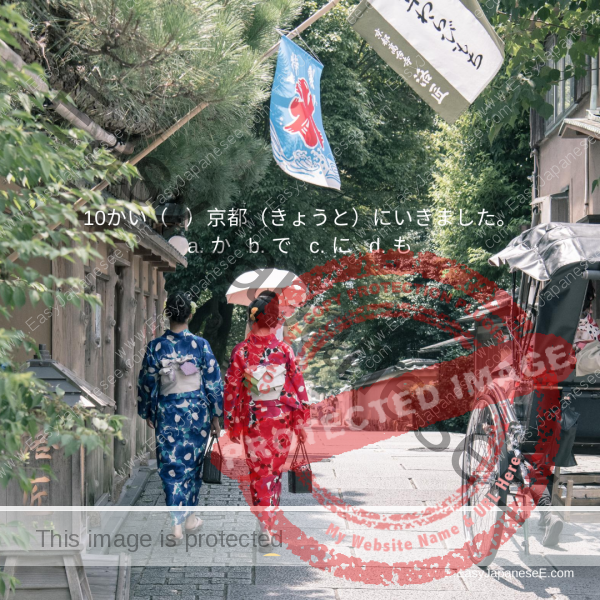
10かい( )京都(きょうと)にいきました。
a. か b. で c. に d. も
The sentence without the brackets means “I went to Kyoto 10 times” and it is OK as it is. However, if I want to emphasize “10 times” and say “as many as 10 times” then I would add d. も there.
More examples:
ジョンさんはハンバーガーを5つも食べた。
John ate as many as 5 hamburgers.
昨日は12時間も寝た。
I slept as long as 12 hours yesterday.
エマさんはセーターを8枚も編んだ。
Emma knitted as many as 8 jumpers.
ヤンさんには兄弟が九人もいる。
Jan has as many as 9 siblings (brothers and sisters).
メグさんは10ページものレポートを書いた。
Meg wrote a report as many as 10 pages long.
えっ?コーヒーにさとうを三つも入れるんですか?
What? Do you have 3 sugars in your coffee?
トシさんは毎日10キロも走る。
Toshi runs as long as 10 km every day.
Note that this も is always used after a number + counter.
も in the meaning of “too” or “also”
ジョンさんもハンバーガーを5つ食べた。
John also ate 5 hamburgers.
エマさんはセーターも8枚編んだ。
Emma knitted 8 jumpers also (as well as something she knitted 8 of).
ヤンさんにも兄弟が九人いる。
Jan also has 9 siblings (as well as somebody else who has 9 siblings).
トシさんも毎日10キロ走る。
Toshi also runs 10 km every day.
For more study material for JLPT N4 exam, please visit JLPT N4 Grammar and Vocab and JLPT N4 Kanji pages.
EasyJapaneseE’s Basic Grammar Exercise Modules
Following short modules are available for subscription! Click the name of a module for more information.
![[a number + counter] + も](https://www.easyjapanesee.com/wp-content/uploads/2020/09/200908-10回も.png)
